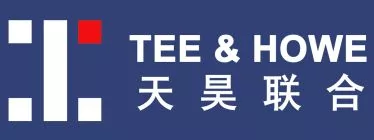The SAMR announced Provisions Prohibiting Abuse of IP Rights to Exclude and Restrict Competition yesterday (29 June 2023) at the link below:
https://www.samr.gov.cn/zw/zfxxgk/fdzdgknr/fgs/art/2023/art_e155397fbe5c4c05ad3c1838c1322ad2.html
These provisions are final, and will come into force on 1 August 2023.
I have a machine English translation of these provisions.
Several observations I have:
- Article 6 limits the "market" to "technology
market" (for example the one involving standards, but please
correct if my reading is incorrect), and product market. Research
market seems no longer involved (if my memory is right, research
market was tried to be introduced in the last draft). Much relief
from me. (Does this mean that our last draft worked?)
- Article 6 also recites "Operators shall not use the
enforcement of intellectual property rights to organize other
operators to reach monopoly agreements or to provide substantial
assistance to other operators in reaching monopoly
agreements." Would this cover standard setting bodies?
- Article 7 puts the burden of proof on the operator to
"prove that it does not have the effect of excluding or
restricting competition". The problem is, how much does the
operator need to prove, and whether the administration/court in
China would accept such proof?
- It is good news that Article 8 recites that the operator
"cannot be presumed to have a dominant market position in the
relevant market based solely on the operator's possession of
intellectual property rights."
- Although article 10 seems to be a compulsory clause, there are
further factors to invoke this article (not in the typical
compulsory license article of patent law). Specifically, the
operator has to have a dominant market position, and fulfill the
following conditions, presumably all are to be proven by the
potential licensee (it all depends on how easy to prove,
notwithstanding that China is going anti-monopoly):
- The intellectual property rights cannot be reasonably replaced,
and are necessary for other operators to compete in the relevant
market.
- Refusal to license the intellectual property will result in
competition or innovation in the relevant market being adversely
affected to the detriment of consumer interests or the public
interest.
- The licensing of the intellectual property will not cause unreasonable harm to the operator.
- The intellectual property rights cannot be reasonably replaced,
and are necessary for other operators to compete in the relevant
market.
- As in the anti-monopoly law, the following actions are in the
no-go zones:
- Restricting transaction parties (Article 11)
- Tying of products and license (Article 12)
- Automatic back license/assignment of technologies improved by the licensee, and challenging validity of IP by the licensee (Article 13)
- Restricting transaction parties (Article 11)
- Article 15 requires that "once the concentration of
operator involving IP reaches the declaration standard of the state
council (OK where is this standard?), declaration should be filed
to the SAMR before actual implementation of such
concentration". Does this mean that standard setting bodies
have to all file declarations to the SAMR?
- Article 17 seems to be directed to patent pool specifically,
while Article 18 is for standard setting bodies.
- Violating these provisions would result in the following punishments:
1) For operator practicing monopolistic agreements (Article 25) – injunction, confiscation of income, and fine (this is additional) of 1-10% of last financial year sales (NOT profit), or RMB 5 million or less if no sales.
2) For operator abusing dominant market position (Article 26) - injunction, confiscation of income, and fine (this is additional) of 1-10% of last financial year sales (NOT profit).
3) For operators concentrating IP (Article 27) – injunction, disposition of share or assets within certain time, and fine (this is additional) of 1-10% of last financial year sales (NOT profit), or RMB 5 million or less if no exclusion and restriction of competition occurred.
4) Potential 2-5 times punitive fine (Article 29).
As I always said, I am not familiar with these, and will be grateful for the thoughts of those who are. One question I have is, whether this would cause exodus (on operations) of patent pool and standard setting bodies to stay away from China?
The content of this article is intended to provide a general guide to the subject matter. Specialist advice should be sought about your specific circumstances.

